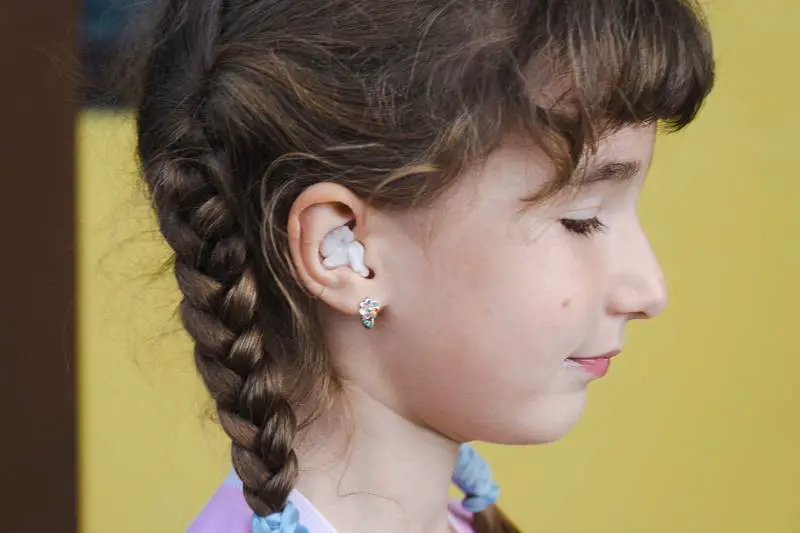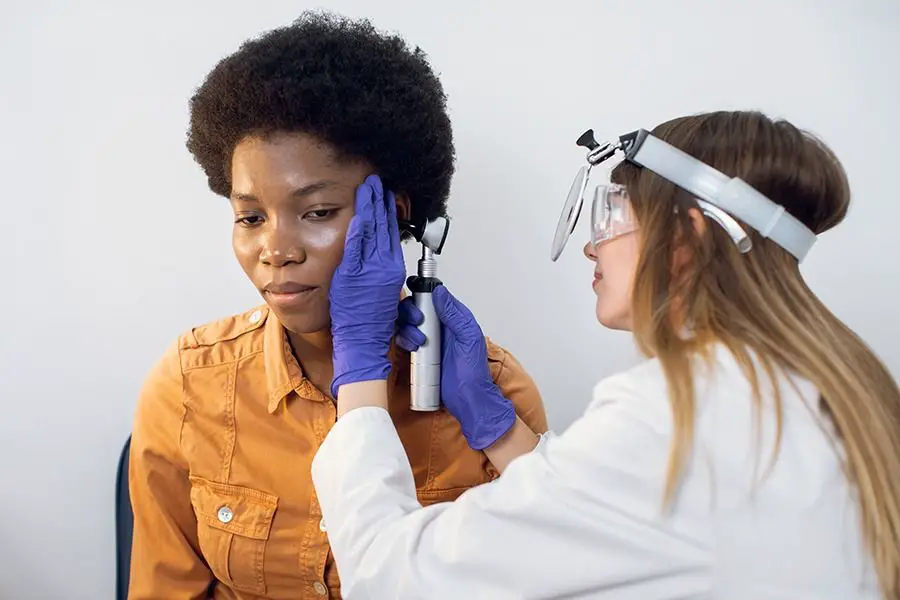Introduction
In the symphony of everyday life, the workplace plays a pivotal role, harmonizing individuals with diverse skills and talents to achieve common goals. However, for individuals with mixed hearing loss (MHL), this harmonious workplace can become discordant, creating barriers to communication, collaboration, and overall professional success. MHL, a complex condition that combines conductive and sensorineural hearing loss, presents unique challenges that require a blend of understanding, effective management strategies, and a supportive work environment.
Decoding the Symphony of Sounds: Unraveling the Auditory Challenges of Mixed Hearing Loss
Individuals with MHL face a unique set of auditory challenges in the workplace, including:
- Difficulty hearing soft sounds: In a typical workplace setting, subtle sounds like whispers, distant conversations, and background chatter can be difficult to discern for individuals with MHL.
- Muffled or distorted sounds: The presence of background noise, such as machinery, conversations, or ringing phones, can distort sounds and make comprehension challenging for individuals with MHL.
- Trouble understanding speech, especially in noisy environments: Meetings, conferences, and even casual conversations can become challenging for individuals with MHL due to background noise and the complexity of group interactions.
- Tinnitus, a persistent ringing or buzzing sensation in the ears: Tinnitus, a common symptom of MHL, can add an extra layer of auditory distraction, affecting concentration and productivity.
Harmonizing the Workplace Environment: Strategies for Effective Communication and Inclusion
Promoting Inclusive Communication Practices: Fostering a Harmonious Workplace for All
Creating an inclusive and accessible workplace for individuals with MHL requires a collaborative effort that involves employers, colleagues, and individuals with hearing loss.
Employer Strategies: Embracing a Culture of Accessibility
Employers can play a significant role in fostering an inclusive workplace by:
- Providing training and education to all employees about MHL and effective communication strategies.
- Implementing assistive listening devices, such as hearing loops and personal amplification systems, in meeting rooms and common areas.
- Ensuring that meeting rooms and workspaces have proper acoustics to minimize background noise and enhance sound quality.
- Encouraging the use of clear and concise communication, avoiding jargon and technical terms that may be difficult to understand.
- Offering flexible work arrangements, such as remote work options, to provide individuals with MHL with greater control over their auditory environment.
Individual Empowerment: Navigating the Workplace with Mixed Hearing Loss
Individuals with MHL can take proactive steps to enhance communication and inclusion in the workplace by:
- Communicating their hearing loss needs and preferences to their employer and colleagues.
- Utilizing assistive listening devices as prescribed by their audiologist.
- Requesting accommodations, such as closed captioning for presentations and meetings.
- Advocating for their needs and preferences in team meetings and performance reviews.
- Building relationships with colleagues and seeking support from mentors and advocates within the workplace.
Practical Tips for Fostering Inclusion
In addition to the strategies mentioned above, here are some practical tips for fostering an inclusive workplace for individuals with MHL:
- Face the speaker when conversing to maximize visual cues.
- Avoid speaking too quickly or softly.
- Use clear and concise language, avoiding jargon and slang.
- Offer written summaries of important discussions or announcements.
- Be patient and understanding, as individuals with MHL may need more time to process information.
Professional Re-Chargeable Hearing Aid
Experience Exceptional Sound Quality with Vivtone RIC02, a professional RIC hearing aid featuring a receiver in the canal design. Enjoy superior sound fidelity, reduced distortion, and minimal feedback. With a remarkable 51dB peak sound gain, it surpasses many other devices, catering to a wide range of hearing loss levels.
State-of-the-Art Technology awaits you with Vivtone RIC02. Designed with US-made components from renowned brands like Intricon and Knowles, this advanced device offers exceptional quality at a fraction of the cost. The built-in 30mAh steel-sealed lithium polymer battery charges rapidly in just 1.5 hours and provides an impressive battery life of over 20 hours.
Reliability and Water Resistance come hand in hand with the Vivtone RIC02. Secure your device with the included lanyard and clip, preventing accidental loss. With an IP65 rating, these hearing aids are resistant to water, sweat, and raindrops, assuring longevity and durability. Give the perfect gift to your seniors and loved ones, as this device combines functionality with an appealing appearance and packaging.
FAQ
1. What is mixed hearing loss (MHL)?
MHL is a condition that combines conductive hearing loss and sensorineural hearing loss. This means that there is damage to both the outer or middle ear and the inner ear or auditory nerve pathway.
2. What are the symptoms of MHL?
Symptoms of MHL can include difficulty hearing soft sounds, muffled or distorted sounds, trouble understanding speech, especially in noisy environments, and tinnitus.
3. What can employers do to accommodate employees with MHL?
Employers can provide training and education to all employees about MHL, implement assistive listening devices, ensure proper acoustics in meeting rooms and workspaces, encourage clear and concise communication, and offer flexible work arrangements.
Expanded Section: The Impact of Mixed Hearing Loss on Workplace Communication
Mixed hearing loss (MHL) can significantly impact an individual’s ability to communicate effectively in the workplace. The challenges faced by individuals with MHL can hinder their ability to:
- Participate fully in meetings and discussions: The complex nature of group interactions and the presence of background noise can make it difficult for individuals with MHL to follow conversations and contribute meaningfully.
- Understand instructions and requests: Mishearing or misinterpreting instructions can lead to errors, delays, and potential safety hazards.
- Build relationships with colleagues: Effective communication is essential for building rapport, trust, and collaboration in the workplace. Difficulties in communication can create barriers to forming strong relationships with colleagues.
- Engage in informal conversations and social interactions: Casual conversations and social interactions are an integral part of workplace culture. Individuals with MHL may struggle to follow these interactions, leading to feelings of isolation and exclusion.
- Present ideas and participate in presentations: Presentations and group discussions require clear and concise communication. Individuals with MHL may face challenges in presenting their ideas effectively due to their hearing loss.
These communication challenges can have a detrimental impact on an individual’s job performance, career advancement, and overall well-being in the workplace.
Conclusion
Mixed hearing loss presents unique challenges in the workplace, affecting communication, collaboration, and overall professional success. By fostering understanding, implementing effective communication strategies, and embracing inclusive practices, employers and individuals with MHL can harmonize the workplace symphony, enabling everyone to contribute their talents and expertise to a more productive and inclusive work environment. Creating an accessible and supportive workplace for individuals with MHL is not just a matter of compliance or accommodation; it is a strategic investment in the success of the entire organization. By valuing the contributions of all employees, regardless of their hearing abilities, workplaces can reap the benefits of a diverse and inclusive workforce, fostering innovation, creativity, and a more harmonious work environment for all.






